Works by series
ESPILLS D'UN JARDÍ (1991 - 1992) AND GOUTTES D'OR DANS LA VILLE (1993)
Focus on the moment, the incorporation of narrative intention and new techniques.
After the earlier period which encompassed the whole of the decade of the 1980s, centred around the three series Fetitxes andalusís, Deessa Màscara and Malhafa, all focused on the figure of the woman in the Arab world, Enric Alfons began a new phase in his painting.
He became increasingly enamoured with the authenticity of everyday life among the local communities he came across on his travels. A life based on reciprocity and cooperation with a subsistence economy, ties of kinship and an extremely rich cultural and spiritual dimension. At the same time, he read extensively on subjects such as anthropology, culture, religion and art from the Sahara, Sub-Saharan Africa and the Middle East. He also found inspiration in the writings of Juan Goytisolo, closely connected to both Paris and the Arab world since the 1960s. “The person who influenced me the most was Goytisolo,” Alfons would declare.[1]
He continued his travels throughout North Africa, including Mauritania, but now he expanded his field of inquiry in two very different directions: Turkish Kurdistan (July 1991), shortly after the first Gulf War, when over a million Iraqi Kurds had sought refuge there, and where he encountered a tense almost militarized atmosphere, at times only able to take brief notes and sketches. He also visited Paris and London, where he focused on immigrant communities, keenly observing how they adapted to their new surroundings, in the process enriching and reshaping these cities with their presence, and capturing the wealth of diversity.[2] In London, he sought out contact with Kurdish political refugees to learn more about their culture and situation.
E.J. Martínez Alfonso[3] vividly describes Alfons’s experience in Paris and the places in which he moved; his encounters with African marabouts, his exploration of the area surrounding the Barbès metro station and the alleys of La Goutte d’Or, the bustling crowds in markets full of stalls selling second-hand clothes and trinkets, the area around the Tati shopping centre with its bargain stores, shops selling multi-ethnic music and videos, Soninke dyers alongside tourists, Senegalese tailors next to luxury boutiques. On Sunday afternoons, the parks and cafés of the 18th arrondissement full of African women in vibrant, elegant garments with their children.
This environment is also evoked by Josep Lozano in his beautiful short story “Walata,” dedicated to Alfons,[4] which changes the viewpoint and follows the thoughts and memories of a young Mauritanian man living in Paris, replete with allusions to places, themes and scenes evoked in Alfons’s paintings: Sunday afternoons among immigrant families, Barbès, La Goutte d’Or, Nouakchott, Djajibini and the interiors of Mauritanian homes. Once again, writing goes hand in hand with painting.
In various interviews, Alfons offered clues to a better understanding of the new themes, techniques and style he was adopting at the time: “I discovered a completely different world [...] I’ve started out on a whole new phase. There’s a narrative intention...” He wanted to capture “snapshots of everyday life, as I observe them [...] I open my box and paint [...] It’s a frenetic activity, more intuitive than reflective” (see note 1). He felt the need to capture and describe the moment, to transfer to his paintings the atmosphere, the light, the colours and the power and depth of his experiences.
And so, the stories were no longer timeless or referring to the Arab world and cultures in a general way, as was the case of his previous series. Now he situated his scenes in specific moments and places. His new works began to feature multiple figures in movement, sometimes more descriptive and other times more abstract, in simple recurring structures that suggest a place, an atmosphere full of movement, or scenes crowded with objects or people.[5]
In addition, because of his desire to capture the moment, Alfons returned to a method learned during his student years: painting in situ on small wood panels, echoing the plein air techniques favoured by the Impressionists.
When addressing this period in his career, many art critics underscore the notable greater freedom in gesture, the larger focus on a vibrant play of colours, the depiction of more elementary and simplified forms, and a synthesis of textures and colours whose ultimate goal was to depict, not cliched figures or patterns, but rather to evoke moods and atmospheres that would prompt the beholder to look at diversity with fresh eyes.
Alfons’s noteworthy solo exhibitions from this period include Espills d’un jardí (Bancaja Cultural Centre, Valencia, January-February 1992), Pinturas (Galería Cromo, Alicante, December 1992), and Gouttes d’Or dans la ville (Galería Rosalía Sender, Valencia, February–March 1993).
At the same time, equally of note are three group shows in which Alfons exhibited paintings from these series: De mar a mar, organized jointly by the San Carlos School of Fine Arts at UPV and the Southampton Institute of Higher Education in 1993; Encuentros en el Zócalo also organized jointly by the San Carlos School of Fine Arts at UPV and the National School of Visual Arts at UNAM, Mexico, that same year; and Encrucijadas mediterráneas, viajes y errares organized by the Provincial Council of Valencia in 2000.
[1] Interview with R. Ventura Meliá a Enric Alfons, Levante, 21 January 1992.
[2] Article by C.D.M. “El rojo vital”, Levante, 26 February 1993.
[3] E.J. Martínez Alfonso “Anécdotas de un nómada”, handout for the exhibition Gouttes d’or dans la ville, Galería Rosalía Sender, Valencia, February-March 1993.
[4] Short story published in the catalogue for the exhibition Espills d’un jardí, Obra Cultural Bancaja, January-February 1992.
[5] Román de la Calle “Enric Alfons: la llamada del sur…” in the catalogue for the exhibition Espills d’un jardí, Obra Cultural Bancaja, January-February 1992.
After the earlier period which encompassed the whole of the decade of the 1980s, centred around the three series Fetitxes andalusís, Deessa Màscara and Malhafa, all focused on the figure of the woman in the Arab world, Enric Alfons began a new phase in his painting.
He became increasingly enamoured with the authenticity of everyday life among the local communities he came across on his travels. A life based on reciprocity and cooperation with a subsistence economy, ties of kinship and an extremely rich cultural and spiritual dimension. At the same time, he read extensively on subjects such as anthropology, culture, religion and art from the Sahara, Sub-Saharan Africa and the Middle East. He also found inspiration in the writings of Juan Goytisolo, closely connected to both Paris and the Arab world since the 1960s. “The person who influenced me the most was Goytisolo,” Alfons would declare.[1]
He continued his travels throughout North Africa, including Mauritania, but now he expanded his field of inquiry in two very different directions: Turkish Kurdistan (July 1991), shortly after the first Gulf War, when over a million Iraqi Kurds had sought refuge there, and where he encountered a tense almost militarized atmosphere, at times only able to take brief notes and sketches. He also visited Paris and London, where he focused on immigrant communities, keenly observing how they adapted to their new surroundings, in the process enriching and reshaping these cities with their presence, and capturing the wealth of diversity.[2] In London, he sought out contact with Kurdish political refugees to learn more about their culture and situation.
E.J. Martínez Alfonso[3] vividly describes Alfons’s experience in Paris and the places in which he moved; his encounters with African marabouts, his exploration of the area surrounding the Barbès metro station and the alleys of La Goutte d’Or, the bustling crowds in markets full of stalls selling second-hand clothes and trinkets, the area around the Tati shopping centre with its bargain stores, shops selling multi-ethnic music and videos, Soninke dyers alongside tourists, Senegalese tailors next to luxury boutiques. On Sunday afternoons, the parks and cafés of the 18th arrondissement full of African women in vibrant, elegant garments with their children.
This environment is also evoked by Josep Lozano in his beautiful short story “Walata,” dedicated to Alfons,[4] which changes the viewpoint and follows the thoughts and memories of a young Mauritanian man living in Paris, replete with allusions to places, themes and scenes evoked in Alfons’s paintings: Sunday afternoons among immigrant families, Barbès, La Goutte d’Or, Nouakchott, Djajibini and the interiors of Mauritanian homes. Once again, writing goes hand in hand with painting.
In various interviews, Alfons offered clues to a better understanding of the new themes, techniques and style he was adopting at the time: “I discovered a completely different world [...] I’ve started out on a whole new phase. There’s a narrative intention...” He wanted to capture “snapshots of everyday life, as I observe them [...] I open my box and paint [...] It’s a frenetic activity, more intuitive than reflective” (see note 1). He felt the need to capture and describe the moment, to transfer to his paintings the atmosphere, the light, the colours and the power and depth of his experiences.
And so, the stories were no longer timeless or referring to the Arab world and cultures in a general way, as was the case of his previous series. Now he situated his scenes in specific moments and places. His new works began to feature multiple figures in movement, sometimes more descriptive and other times more abstract, in simple recurring structures that suggest a place, an atmosphere full of movement, or scenes crowded with objects or people.[5]
In addition, because of his desire to capture the moment, Alfons returned to a method learned during his student years: painting in situ on small wood panels, echoing the plein air techniques favoured by the Impressionists.
When addressing this period in his career, many art critics underscore the notable greater freedom in gesture, the larger focus on a vibrant play of colours, the depiction of more elementary and simplified forms, and a synthesis of textures and colours whose ultimate goal was to depict, not cliched figures or patterns, but rather to evoke moods and atmospheres that would prompt the beholder to look at diversity with fresh eyes.
Alfons’s noteworthy solo exhibitions from this period include Espills d’un jardí (Bancaja Cultural Centre, Valencia, January-February 1992), Pinturas (Galería Cromo, Alicante, December 1992), and Gouttes d’Or dans la ville (Galería Rosalía Sender, Valencia, February–March 1993).
At the same time, equally of note are three group shows in which Alfons exhibited paintings from these series: De mar a mar, organized jointly by the San Carlos School of Fine Arts at UPV and the Southampton Institute of Higher Education in 1993; Encuentros en el Zócalo also organized jointly by the San Carlos School of Fine Arts at UPV and the National School of Visual Arts at UNAM, Mexico, that same year; and Encrucijadas mediterráneas, viajes y errares organized by the Provincial Council of Valencia in 2000.
[1] Interview with R. Ventura Meliá a Enric Alfons, Levante, 21 January 1992.
[2] Article by C.D.M. “El rojo vital”, Levante, 26 February 1993.
[3] E.J. Martínez Alfonso “Anécdotas de un nómada”, handout for the exhibition Gouttes d’or dans la ville, Galería Rosalía Sender, Valencia, February-March 1993.
[4] Short story published in the catalogue for the exhibition Espills d’un jardí, Obra Cultural Bancaja, January-February 1992.
[5] Román de la Calle “Enric Alfons: la llamada del sur…” in the catalogue for the exhibition Espills d’un jardí, Obra Cultural Bancaja, January-February 1992.
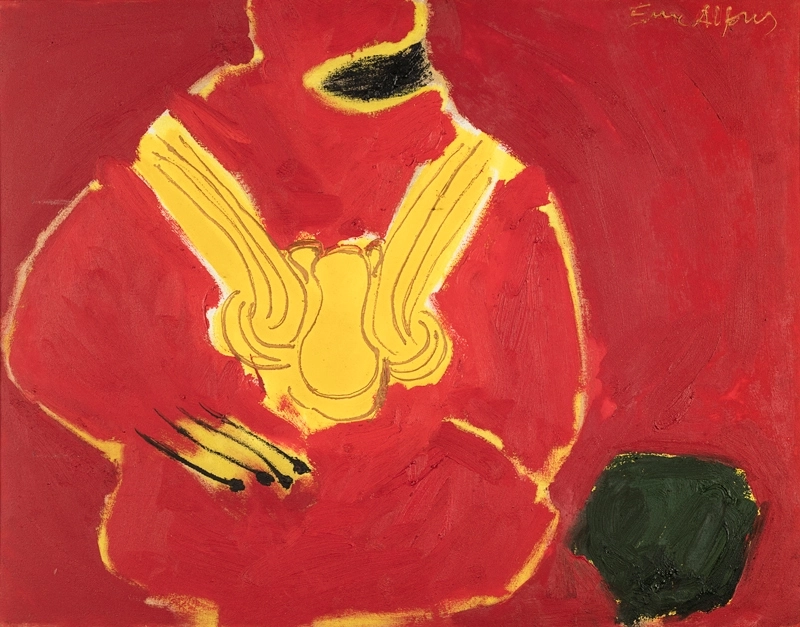
Untitled (the series Espills d'un jardí), c.1990
Oil/canvas, 72 x 93 cm
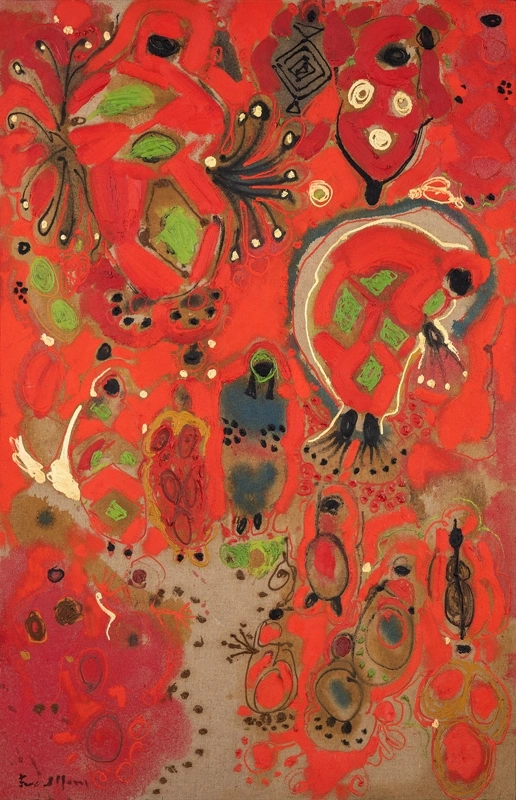
Jardín, n.d., c.1991
Oil/canvas, 100 x 65 cm
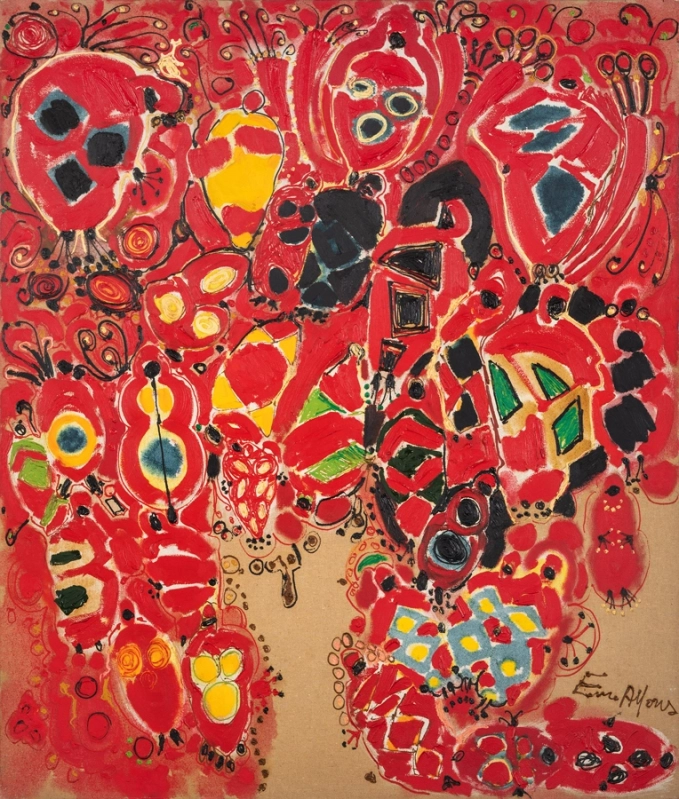
Jardín, c.1991
Oil/canvas, 130 x 110 cm
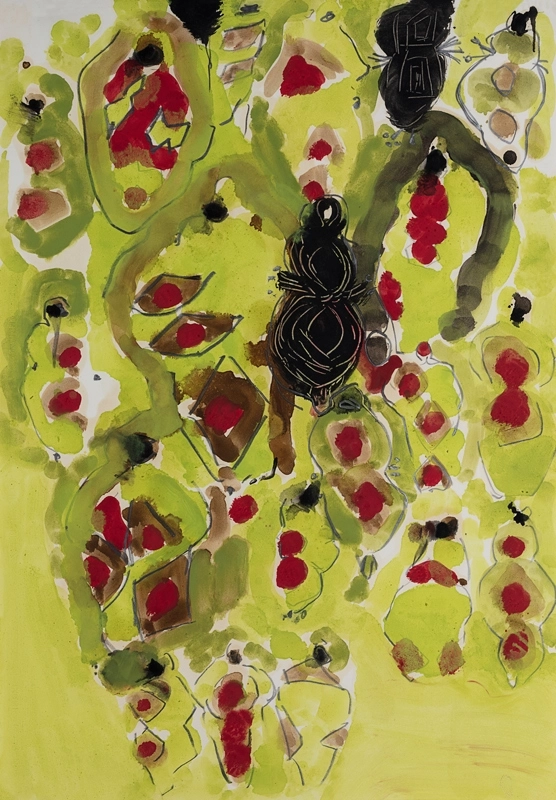
Jardín, 1991
Oil and graphite/paper, 100 x 70 cm
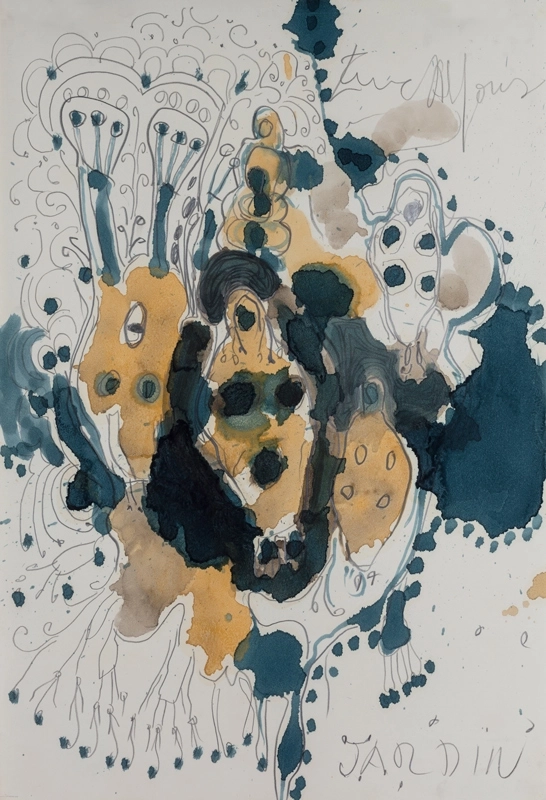
Jardín, 1991
Oil and graphite/paper, 100 x 70 cm
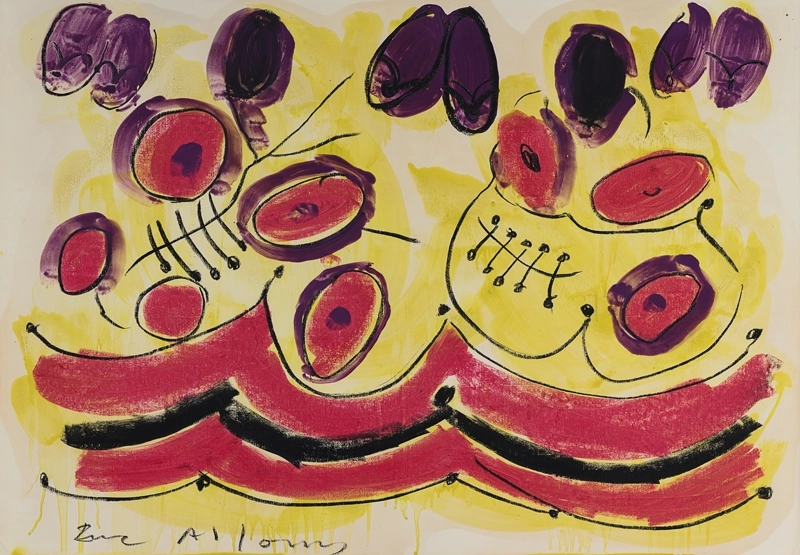
Jardín, 1991
Oil and graphite/paper, 70 x 100 cm
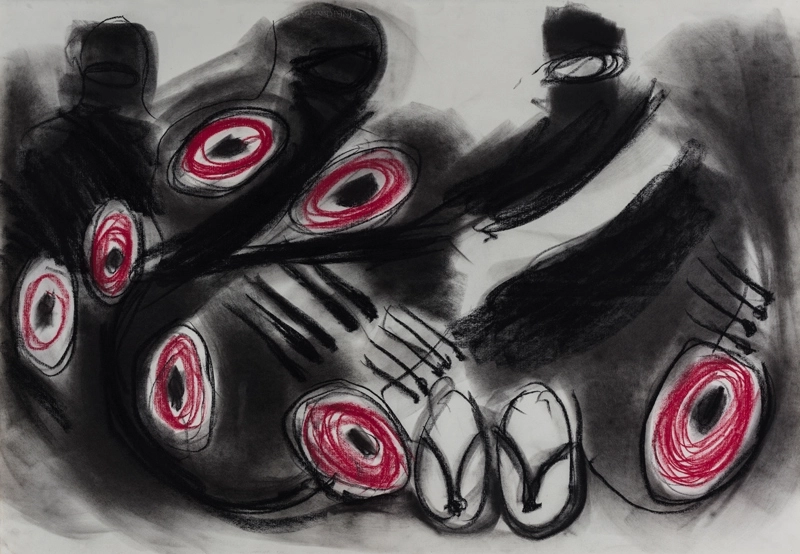
Jardín, 1991
Charcoal and wax/paper, 70 x 100 cm
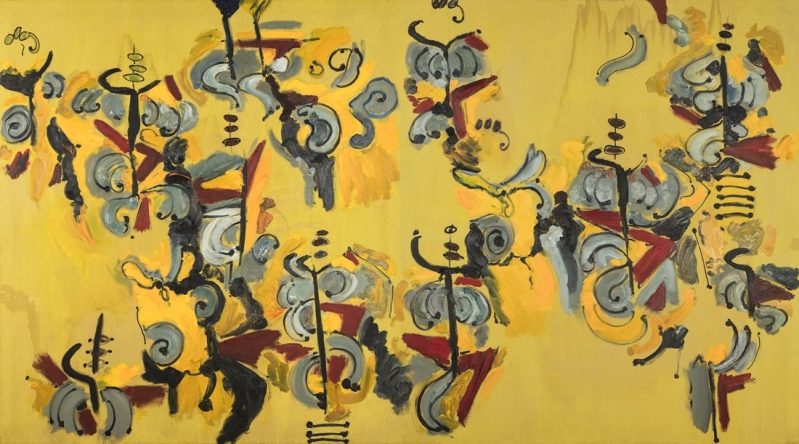
Djajibini, 1991
Diptych. Oil/canvas, 200 x 360 cm
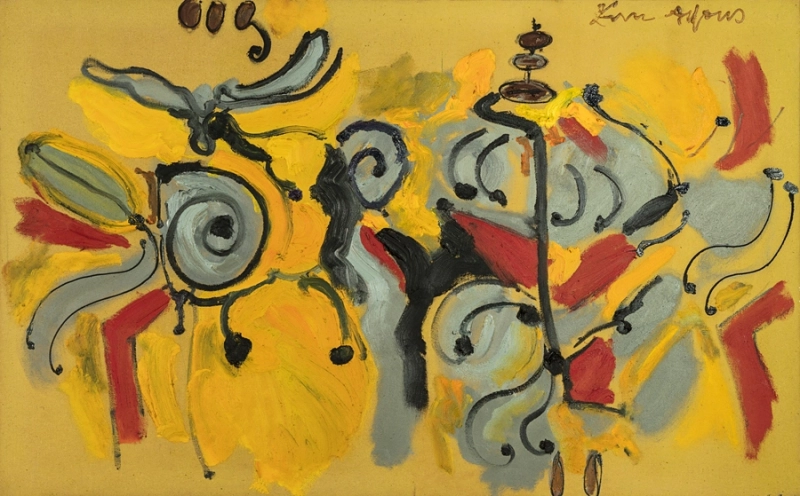
Untitled (Study for Djajibini), 1991
Oil/canvas, 81 x 130 cm
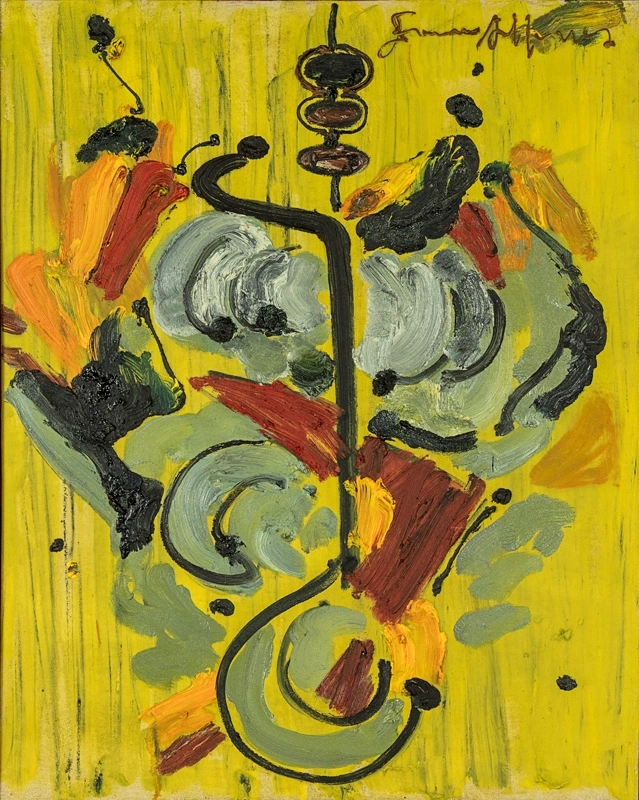
Untitled (Study for Djajibini), 1991
Oil/canvas, 92 x 73 cm
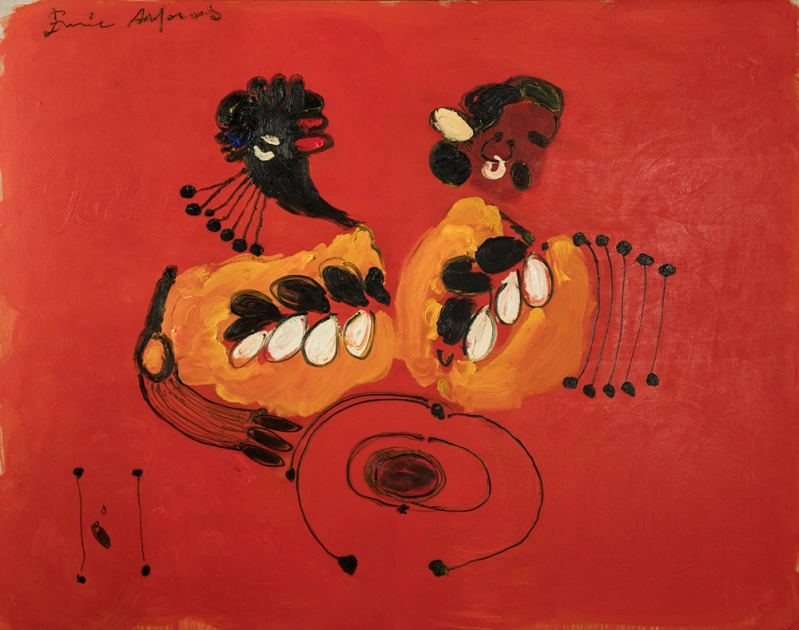
Dimanche après-midi, 1991
Oil/canvas, 160 x 200 cm
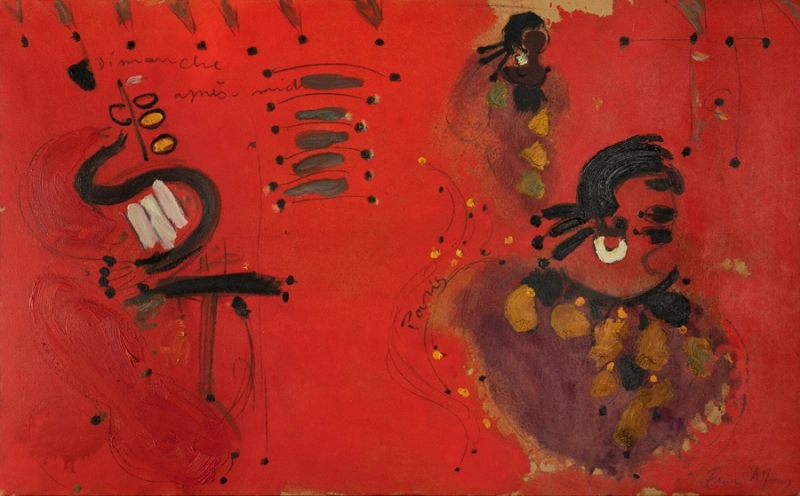
Dimanche après-midi, 1991
Oil/canvas, 81 x 130 cm
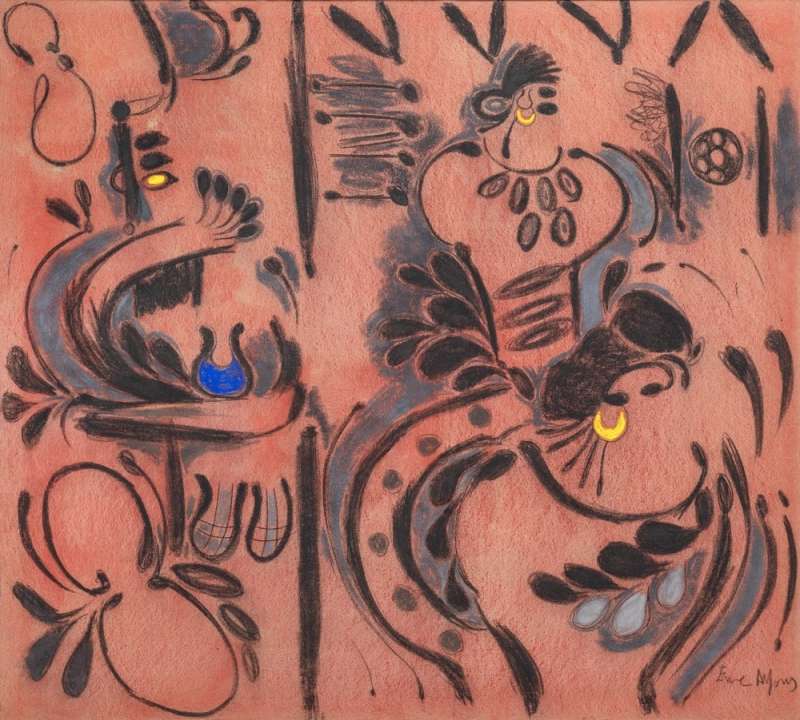
Dimanche-après-midi, 1991
Oil, charcoal, and pastel/canvas, 200 X 180 cm
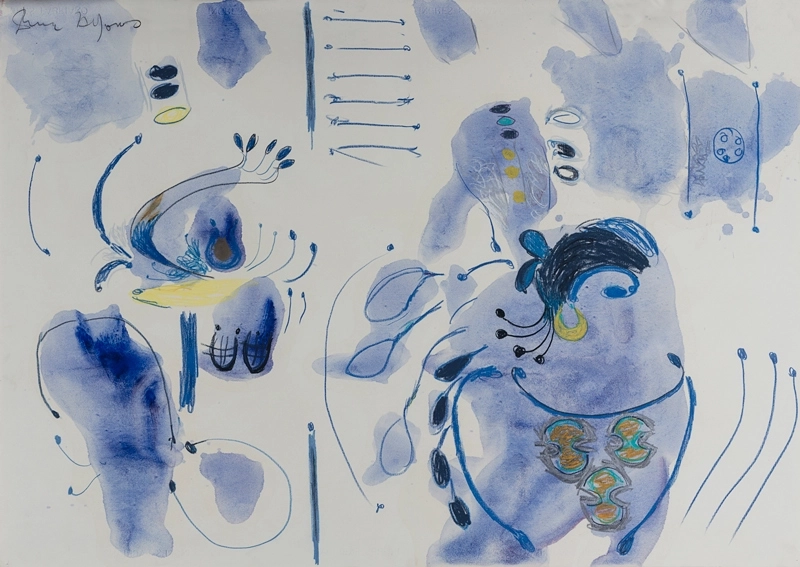
Dimanche après-midi, 1991
Oil, graphite, and pencil/paper, 70 x 100 cm
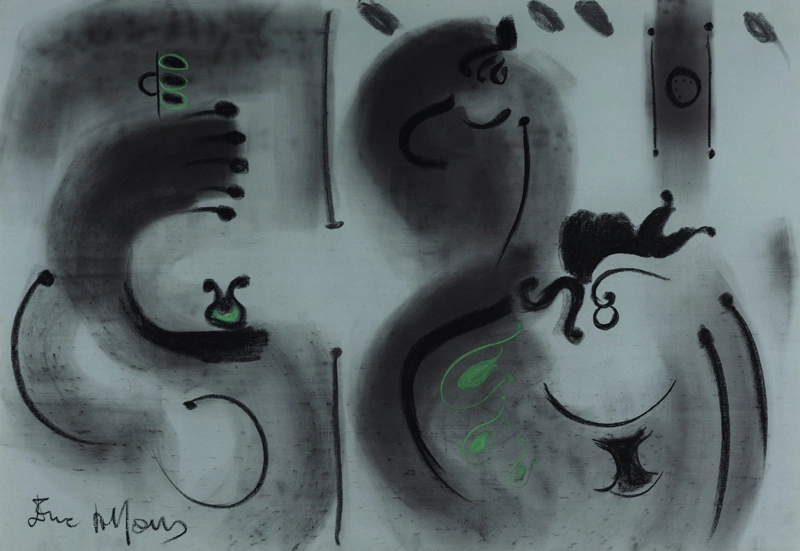
Dimanche après-midi, 1991
Mixed media/paper, 70 x 100 cm
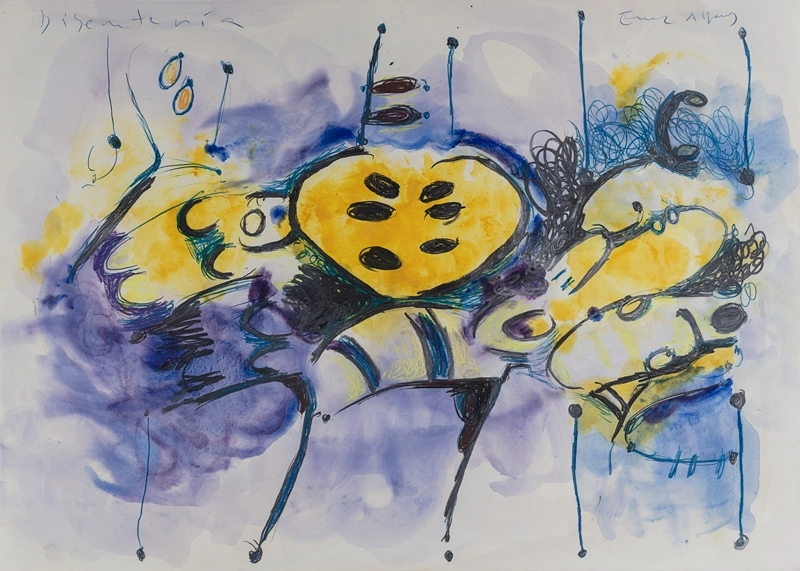
Disentería, 1991
Mixed media/paper, 70 x 100 cm
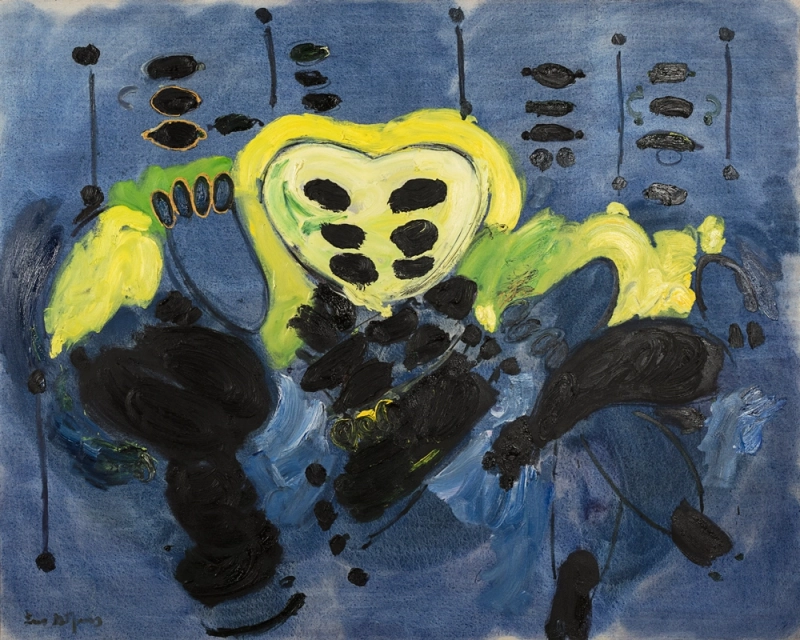
Disentería, 1991
Oil/canvas, 160 x 200 cm
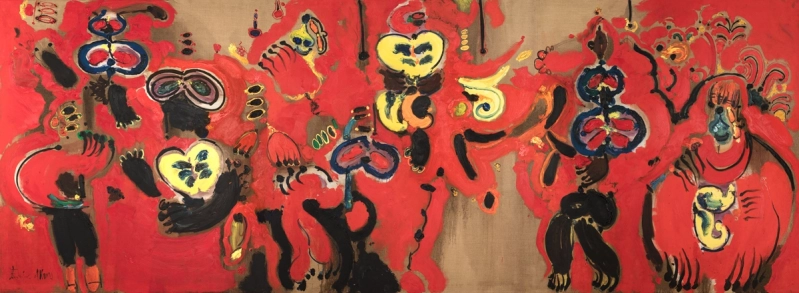
Untitled (The series Espills d'un jardí), c.1991
Triptych. Oil/canvas, 200 x 540 cm
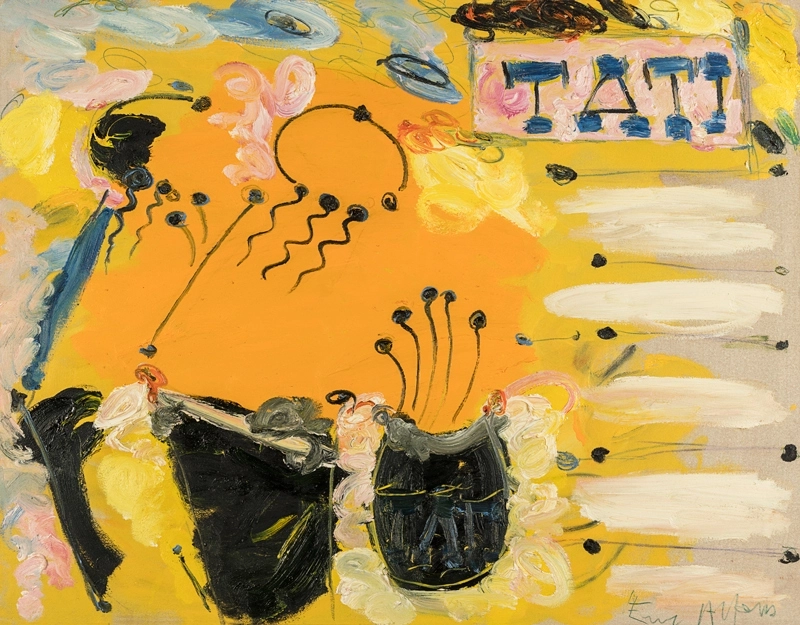
Untitled (Tati stores, Paris), c.1991
Oil/canvas, 73 x 92 cm
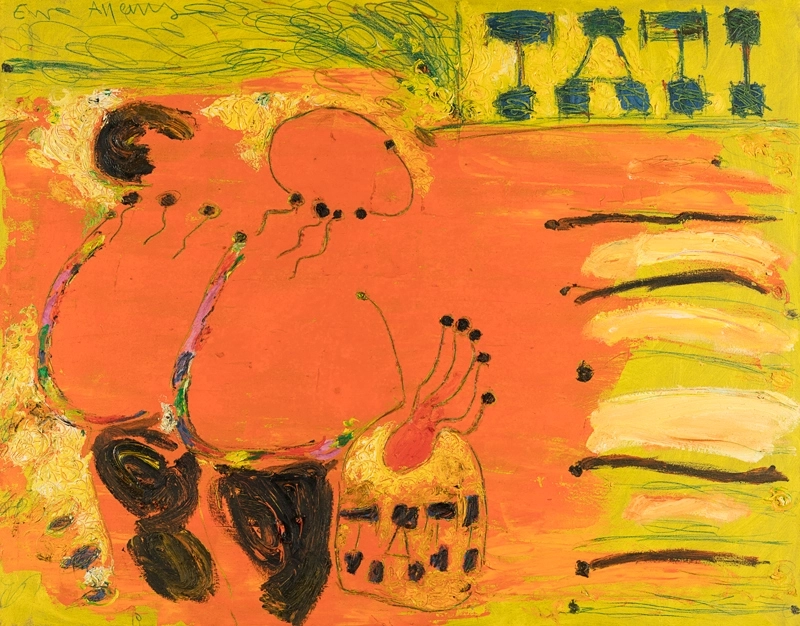
Untitled (Tati stores, Paris), c.1991
Oil/canvas, 73 x 92 cm
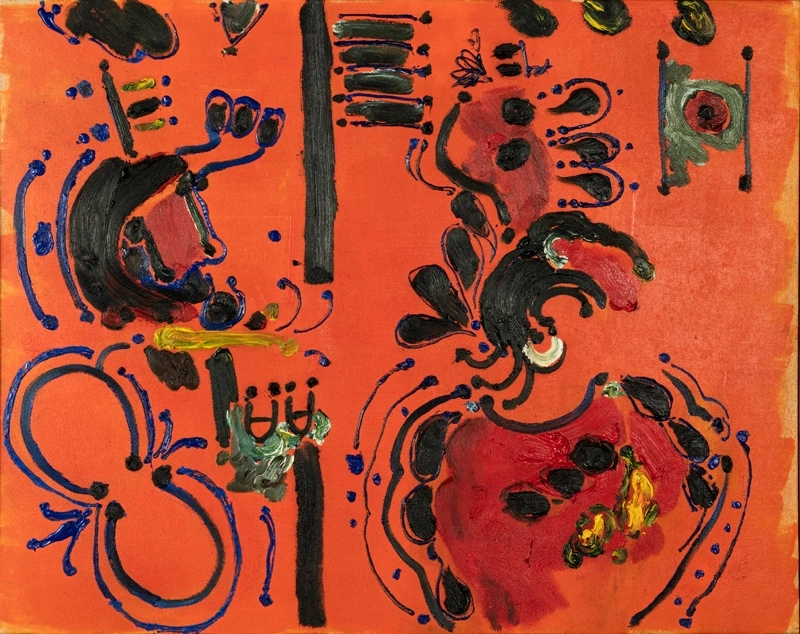
Dimanche après-midi, 1992
Oil/canvas, 73 x 92 cm
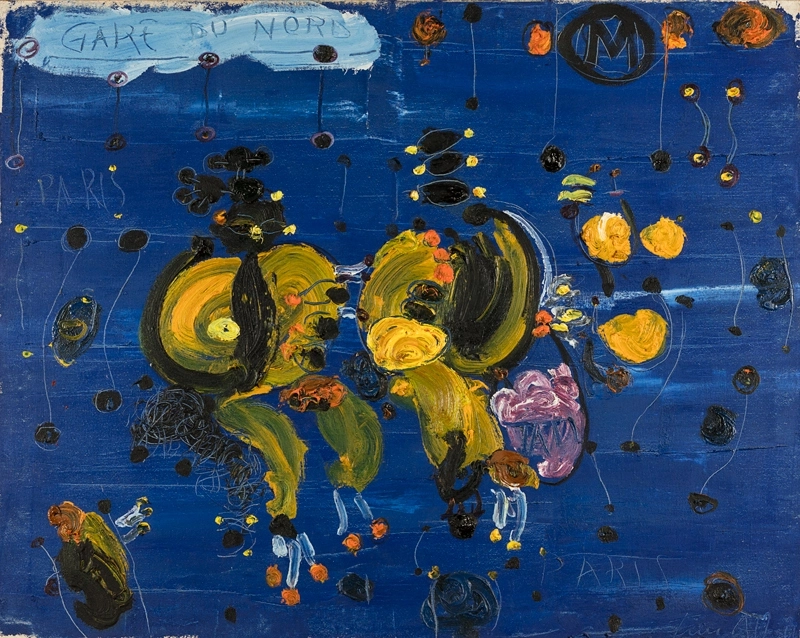
Untitled (Gard du Nord, Paris), c.1991-1992
Oil/canvas, 73 x 92 cm
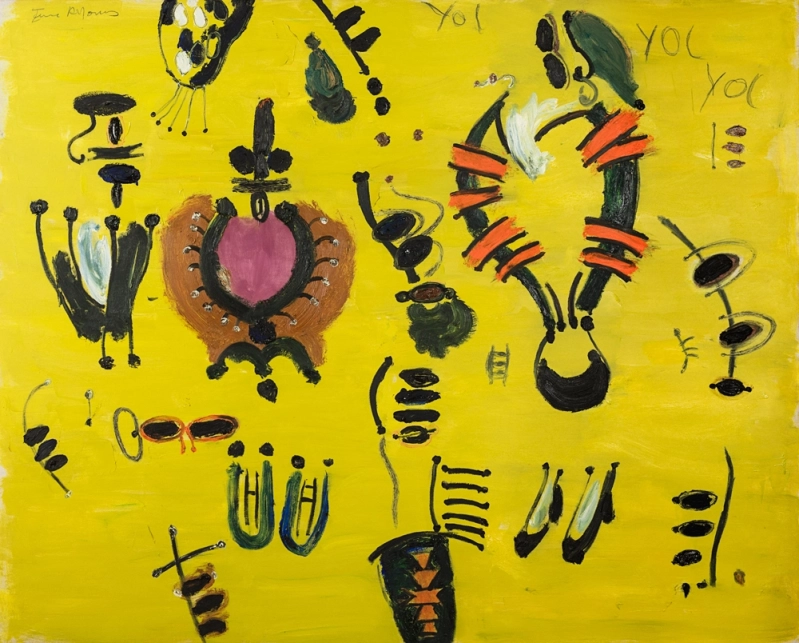
Yol, yol, yol, 1991
Oil/canvas, 160 x 200 cm
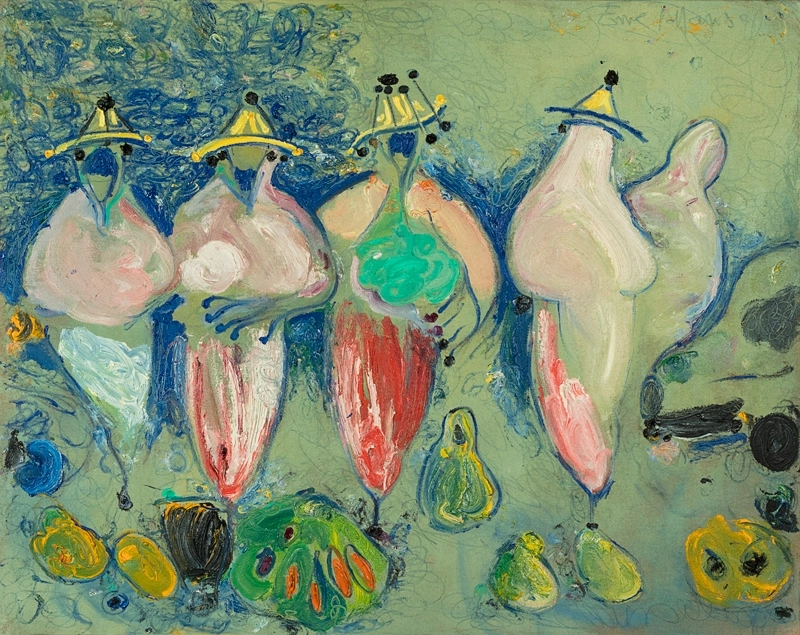
Untitled (The series Espills d'un jardí), c.1992-1994
Oil/canvas, 73 x 92 cm
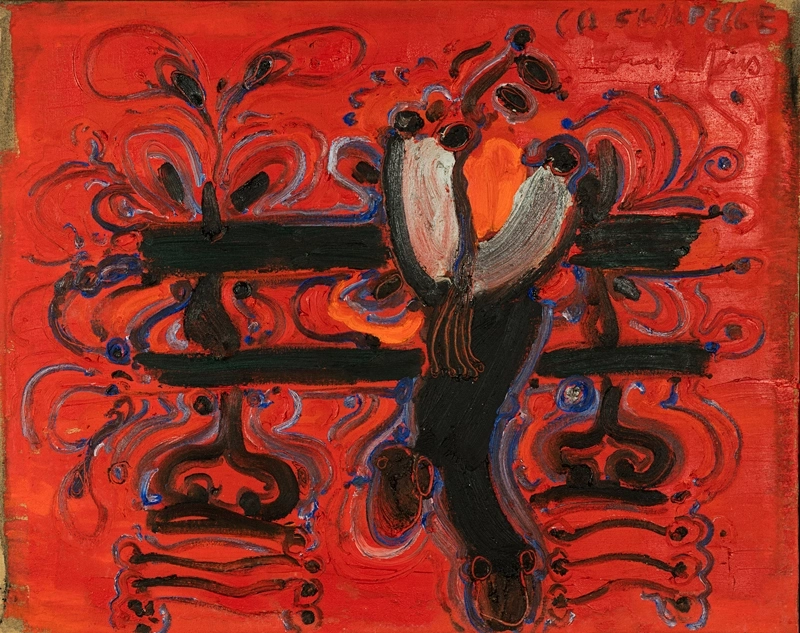
Untitled (La Chapelle. Paris), c.1992
Oil/canvas, 73 x 92 cm
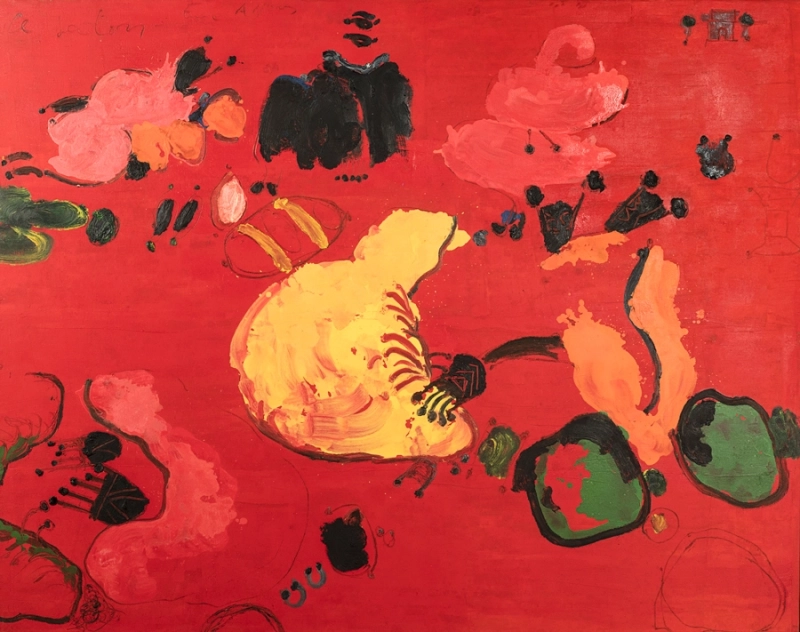
Untitled (Le salon), c.1992
Oil/canvas, 114 x 146 cm
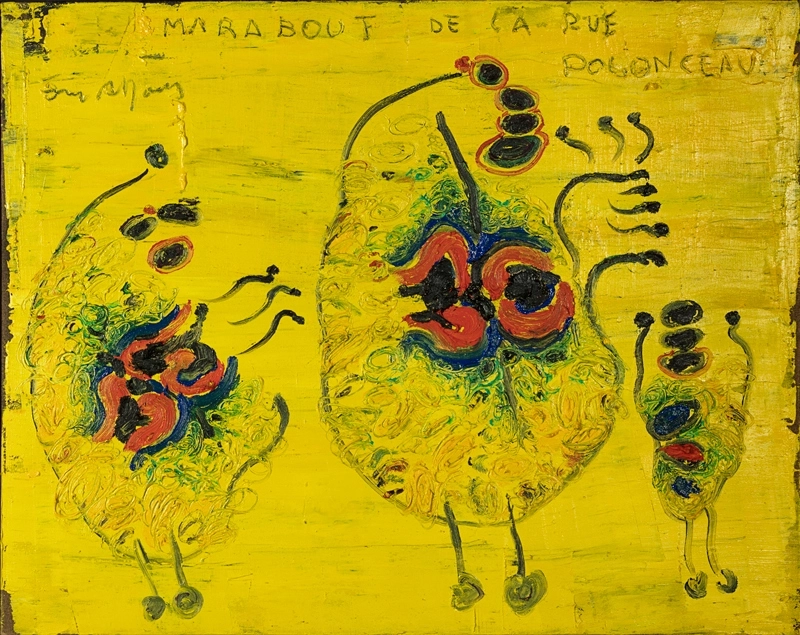
Marbout de la rue Polonceau, 1993
Oil/canvas, 73 x 92 cm
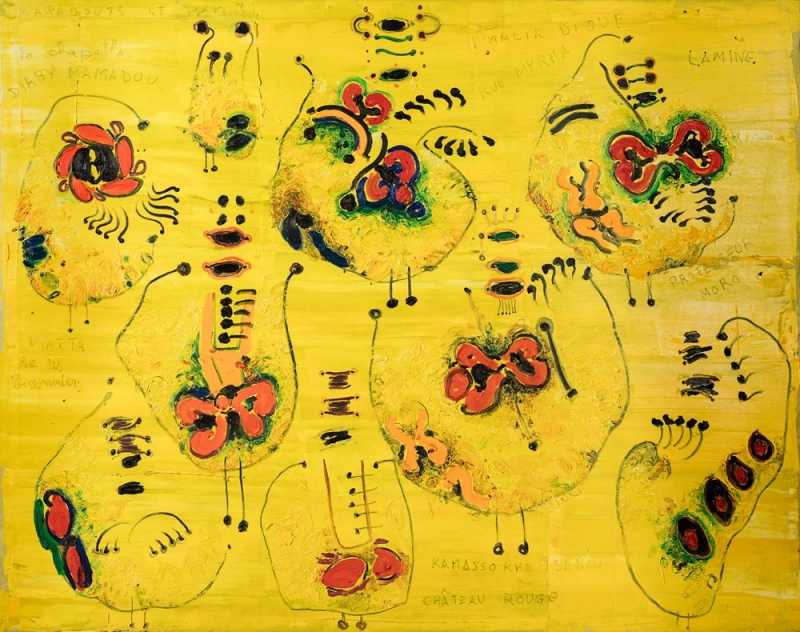
Untitled (Marbouts of Paris), c.1993
Oil/canvas, 160 x 200 cm
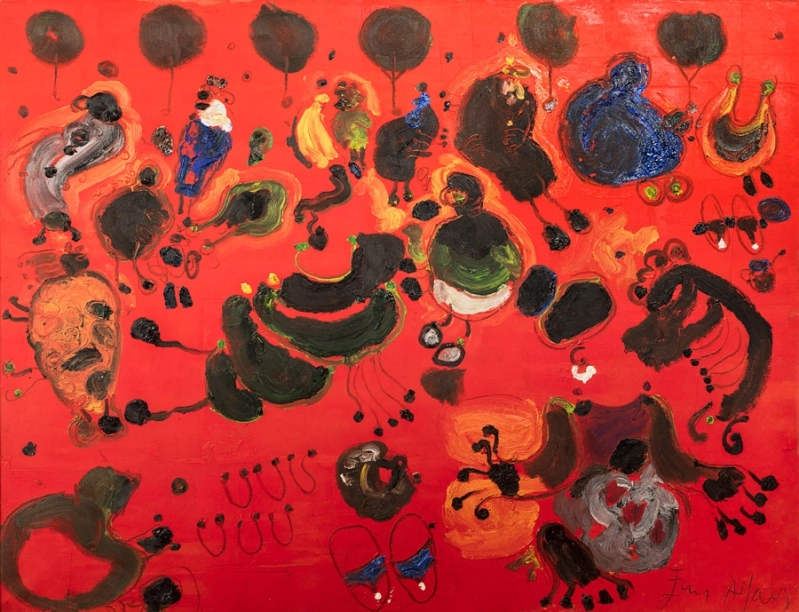
Untitled (Camp dans le bois de Vincennes), c.1995
Oil/canvas, 114 x 146 cm
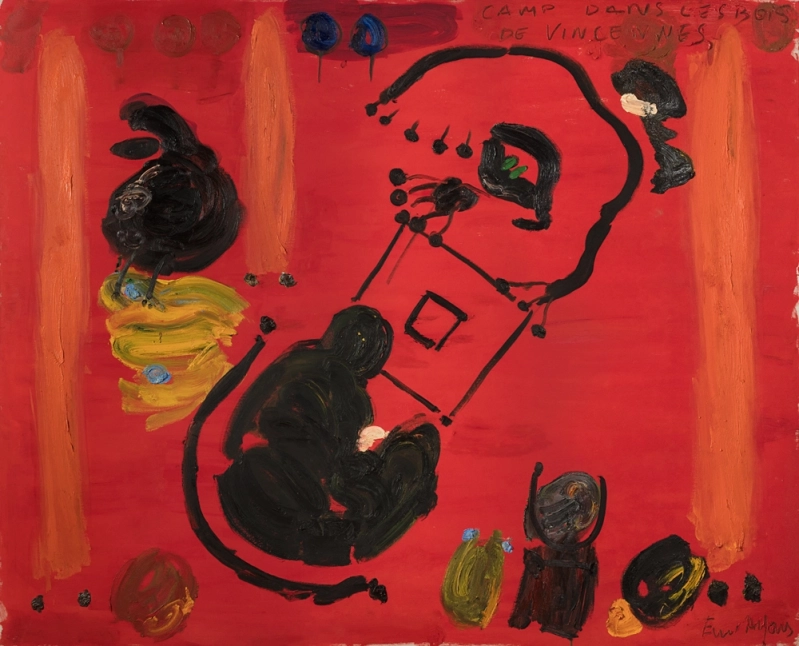
Untitled (Camp dans le bois de Vincennes), c.1995
Oil/canvas, 160 x 200 cm
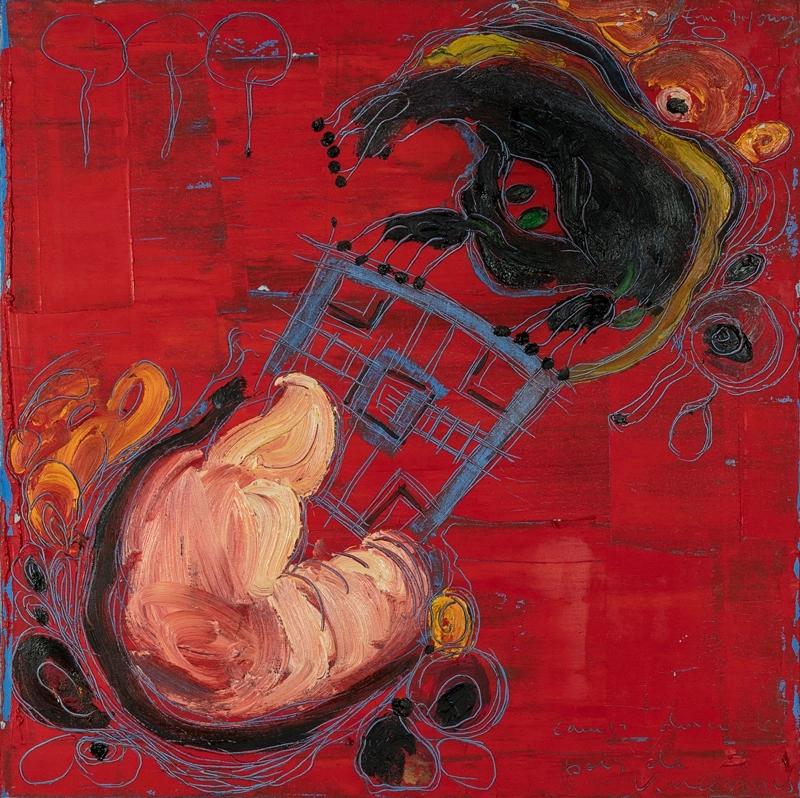
Camp dans le bois de Vincennes, c.1995
Oil/canvas, 92 x 92 cm
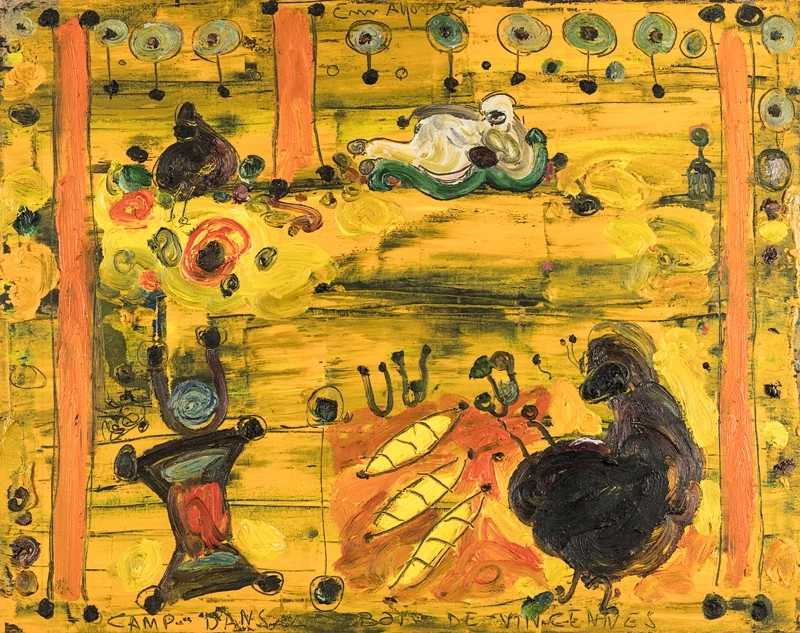
Untitled (Camp dans le bois de Vincennes), c.1995
Oil/canvas, 73 x 92 cm
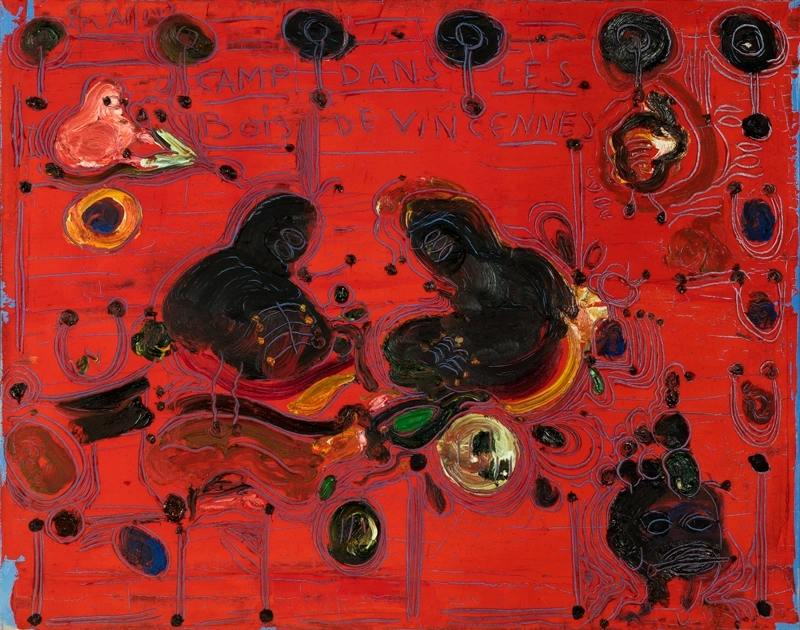
Camp dans le bois de Vincennes, 1995
Oil/canvas, 73 x 92 cm
